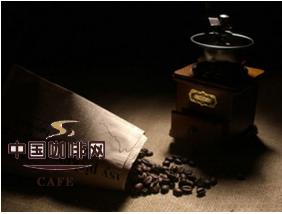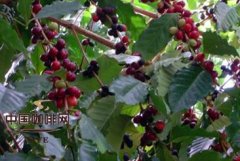The Story of Coffee Culture Organic Coffee "Saving the Nation"

When it comes to Indonesian coffee, you may be familiar with Mantlin, Java or Sulawesi. In fact, East Timor also grows Arabica beans with unique flavor, which has always been a good bean for coffee diners in Europe and the United States. Coffee beans are a major export of East Timor. Kara Scalaro, a former agricultural director, points out that East Timor has an annual budget of about US $100 million, but coffee beans earn enough to cover 50% of East Timor's budget, which is the cornerstone of East Timor's future economic autonomy.
Go to East Timor and be prepared: there is no lifestyle of modern society. East Timor is one of the poorest countries in the world, on a par with Africa, Somalia, Ethiopia and other countries, with an unemployment rate of more than 20%. Most people can only eat one or two meals a day. If this is the case, tourists should not have too much extravagance. Unexpectedly, I tasted the very fragrant and mellow alpine coffee in the capital Dili, which was produced by East Timor. Perhaps this is the best hope for the country to get rid of poverty.
One morning, the guide and I took a four-wheel drive to Ermera, a high mountain area of East Timor. All we saw along the road were scattered mud huts and dense woods. Two hours later, the scene did not seem to fluctuate much, and the vision gradually became numb. Suddenly the four-wheel drive stopped, and the guide suggested that I get out of the car, pointed to the inconspicuous trees on the side of the road and said, "this is the coffee tree you've always wanted to see."
"What!" At that moment, it was a little unexpected. I thought that the coffee tree, a cash cow, must be concentrated in a coffee garden with a heavy door and a deep lock, but it turned out to be so easy to come by.
Ermera is the most famous coffee producing area in East Timor and it is strange that no one can tell me the height of Ermera, but it is obvious that the temperature in this area is more than 6 degrees Celsius lower than in the centre of Dili, which faces the sea, so it is estimated to be more than 1000 metres above sea level. It is known that there are two main categories of coffee beans: high-quality arabica and inferior robusta. Arabica tastes round and pure and expensive, while cheap robusta tastes bitter and contains twice as much caffeine as arabica. Arabica grows between 1000 meters and 3000 meters above sea level. In fact, 80% of the total coffee production in East Timor is high-quality arabica, which shows that this small island is favored by the god of coffee.
The guide was very considerate. Knowing that I had come to look for East Timorese alpine coffee, he offered the coffee that had already been brewed. He said, "if you drink arabica coffee, East Timorese only like to add sugar rather than milk." After a sip, I found that the coffee taste is very fragrant and pure, the taste is soft, round and clean, but the acidity and acidity are mild, which is comparable to drinking Blue Mountain Coffee in Tokyo! No wonder the guide doesn't add milk so as not to cover up the original taste. In fact, I think you have to add sugar, and Zaifen can appreciate the beauty of it more.
Perhaps the world does not know that East Timor is already a country (independent in 2002), let alone a country that produces high-quality arabica coffee beans. The coffee garden was established as early as the 18th century under Portuguese rule, bringing high-quality coffee varieties from South America, coupled with the unique geographical environment of East Timor, it was originally a big coffee country. However, when the country was occupied by Indonesia in 1975, the coffee industry was manipulated, and people just made a profit from it, no matter whether it was of high quality or not, picking and baking at will was the most urgent and quickest; as a result, the price was forced down and there was no guarantee of quality. It was not until 1994 that some American coffee merchants, assisted by the Washington government, set up cooperatives in East Timor, and Indonesia's dominant business situation began to take a turn for the better.
Not to mention that most people know nothing about East Timorese alpine coffee, even a handful of the most knowledgeable people in the world have no clue: at a Nobel Prize banquet held in Norway in 2001, the organizers adopted the proposal to serve East Timorese coffee to all guests, and everyone knew how good the country's products were, and they have since put East Timorese coffee on the menu. Starbucks is said to have been a major customer of East Timorese coffee for many years.
These successes are by no means an expression of sympathy from the first World to the third World. Moreover, Starbucks is a listed company in the United States, and making money is the first goal. East Timorese coffee really wins by quality! Similar to Megatron's premium coffee in Colombia, it is alpine arabica, picked by hand and "wet", that is, soaking the coffee tree fruit in water for at least six hours before pulling out the beans; this is much more expensive (but much cheaper than East Timor) compared to the "drying" commonly used in Brazilian coffee (drying the fruit to dry off), while preserving the delicate and slippery taste of the beans. Another highlight is that East Timorese coffee beans are all organically cultivated, free of pesticides and fertilizers, and grow naturally. In a climate that promotes natural health, people believe that the taste of organic plants is the truest and best. If Colombia can get out, East Timor will have a chance. As a result, many people are optimistic that coffee is the savior of millions of people before the tourism and oil industries take off.
Maybe it's too optimistic.
After the independence of East Timor in 2002, although the coffee industry started anew with international assistance, it unfortunately encountered a market environment in which the supply of coffee beans exceeded demand for many years. It fell from $23.4 per kilogram in 1997 to $3.5 in recent years, fulfilling a Chinese saying: there is a way to decline. Moreover, it is good to be good, but cheap is the trend of the world market. Cheap robusta coffee is always more supported by international coffee groups, and it is more than enough to make canned, instant robusta; even the "coffee specialty" Italians most often drink espresso made with robusta, which is why Brazilian robusta coffee, which is only ok in this level, can account for 30% of the market.
Moreover, there is an inhumane problem: it concerns the natural nature of East Timorese. The so-called organic cultivation of coffee beans is not only because they are produced purely naturally, but also because many East Timorese farmers have adopted a "laissez-faire policy" for a long time. Most coffee trees are naturally raised (in other words, they fend for themselves) without careful cultivation and management. When they produce fruit, they will have a meal, and if they cannot produce, they will eat a small meal. Leave farming to dear God to decide!
Of course, those who are willing to work hard may have affected production due to drought in recent years, lack of matching means of transport, government support, and so on. Therefore, many farmers in mountain areas, who are actually landlords themselves, are unable to make a profit on coffee trees and are willing to endure poverty for a few years. No wonder East Timor coffee accounts for only 0.00006% of the world so far. Coffee experts say that East Timor has "potential", meaning "not fully utilized". Perhaps therefore, Starbucks dare not use East Timorese products as an attraction; on the one hand, because East Timor coffee is not famous; in addition, the output is still not too much, so it has no choice but to mix it with other high-quality coffee.
Important Notice :
前街咖啡 FrontStreet Coffee has moved to new addredd:
FrontStreet Coffee Address: 315,Donghua East Road,GuangZhou
Tel:020 38364473
- Prev

The legend of coffee the story of the discovery of coffee
Coffee flowers carved white jade leaves, coral beads knot. Looking at the coffee in the rain, I couldn't bear to go back. The flowers often bring rain, and the smell is as strong as milk. The mountain birds call at night and pick up fallen pearls in the Ming Dynasty. Walk into the coffee garden in May or June and see the oval pea-sized coffee fruit you won't let me. I will press you, you are next to me, and I squeeze you, gathering in the petioles one by one and bending the branches.
- Next

World Fine Coffee Bean Culture Indonesian Coffee Bean Manning Coffee Culture
It is preserved because it is stored in a cellar for three years before export. But the collection coffee is not old coffee, but slightly pale coffee through special treatment, this kind of coffee is more full-bodied, the acidity will decrease, but the mellowness will increase, the finish will be longer, and will bring a strong spicy flavor, sometimes sour, sometimes walnut, sometimes chocolate. In Blue Mountain Cafe.
Related
- How did the Salvadoran coffee industry develop in Central America?
- What exactly does the golden cup extraction of coffee mean?
- The Origin of Coffee flower
- [2023 Starbucks World Earth Day] there are more meaningful things besides free Starbucks coffee!
- What kind of coffee is there in Spain? 9 Flavors of Spanish Coffee
- Aromatic African coffee| Kenya's coffee culture and historical production area
- Liberica Coffee Bean knowledge: the characteristics of Liberian Coffee beans of the three original species of Coffee beans
- The origin and formula of Spanish latte introduces the taste characteristics of Bombon coffee in Valencia, Spain.
- How to adjust the solution of over-extracted coffee
- What is the tasting period of coffee beans? What is the period of coffee and beans? How should coffee wake up and raise beans?

